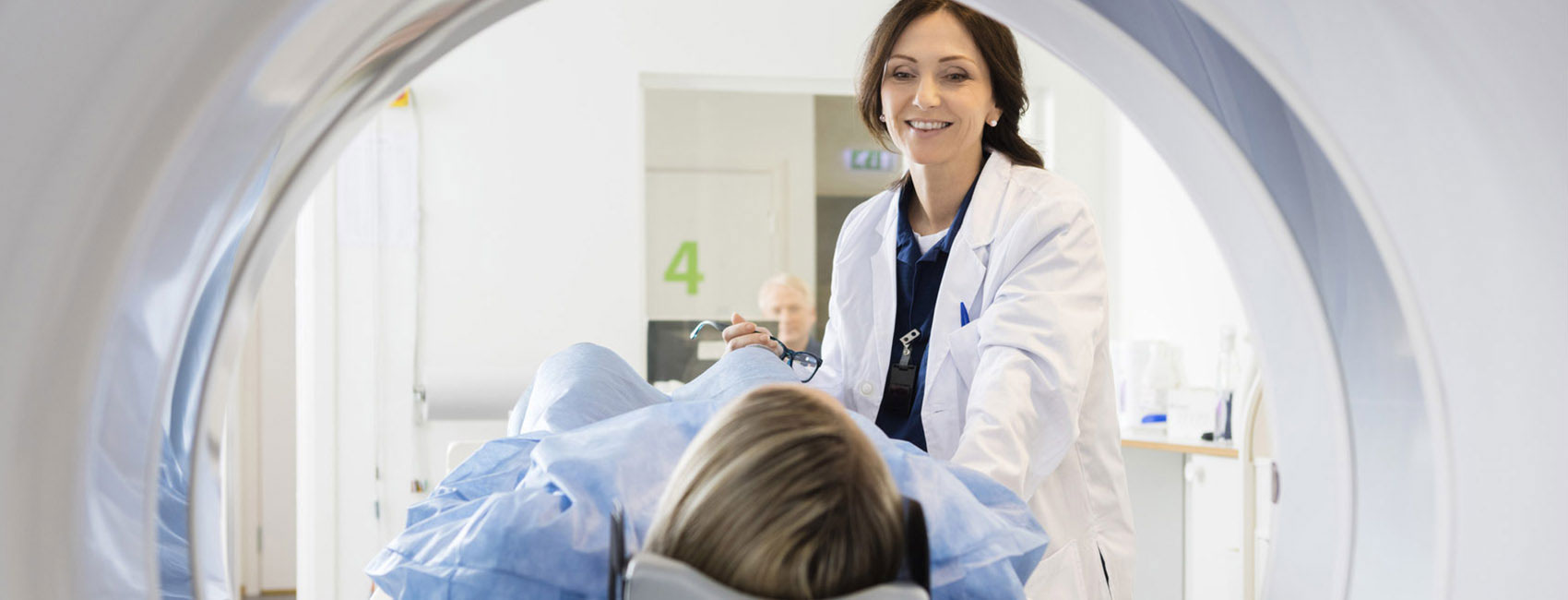Program Overview
The University of New Mexico School of Medicine offers a Bachelor of Science Degree Completion Program in Radiologic Science online, as a continuation of a certificate or associate degree in medical imaging. This program offers an opportunity to expand basic medical imaging knowledge and skills into areas such as education, management, research, or public health. The curriculum is designed to allow continuing students to complete the program on a full or part-time basis. The BS Radiologic Science degree courses are offered online, and admission to the program is offered each semester.
NOTE: This program is a post-licensure program, meaning it is available only to students who already hold a valid radiology license. The University of New Mexico cannot confirm whether this program leads to licensure or advanced certification in your home state. Prior to applying for admission, contact your state radiology board to assure that, upon completion of the program, you are qualified to obtain a license or other form of certification. If you need assistance contacting the licensing agency in your state, contact UNM Online at (866) 869-6040.

Disclosures
The University is required by federal regulation 34 CFR 668.43 to inform students that obtaining this degree may not be sufficient to meet the licensure requirements of your state licensure agency. Since only state agencies have the authority to determine if an individual satisfies the criteria for certification or licensure, UNM cannot assure the attainment of any certificate or license for an individual.
UNM strives to stay informed about the current state requirements for certification or licensure as these are subject to change. Prior to applying for admission, refer to our Professional Licensure Disclosure (PLD) webpage and contact the relevant licensing agency in your state. Also refer directly to the program you are interested in for additional details.
All online and distance education is protected by federal regulations and policies. For details on how, refer to the following resources: State Authorization, Disclosures, Accreditation and Complaint Resolution.
Admissions
To be admitted to the BS in Radiologic Science program, candidates must have the following:
- An Associate Degree in medical imaging program from an outside institution.
- Be ARRT, ARDMS, or NMTCB eligible or certified.
- Undergraduate GPA of 2.5 or higher.
Degree Requirements
To graduate with a bachelor's degree from UNM, a student must complete a minimum of 120 credit hours. UNM requires approximately 31 credit hours distributed between seven areas to complete the UNM General Education requirements. The university also requires completion of a 3 credit hour U.S. and Global Diversity and Inclusion requirement. Students must also complete any remaining prerequisites required for the BSRS – Medical Imaging Concentration. Students may transfer coursework from other accredited institutions to fulfill these requirements. To meet UNM residency requirements, students must complete 30 credit hours at UNM.
For additional degree and program requirements for the BS Degree Completion in Radiologic Science, please refer to the UNM Catalog.
Required Courses: 21 Credit Hours
| Course Number | Course Name | Credit Hours |
|---|---|---|
| RADS 378 | Healthcare Delivery and Compliance | 3 |
| RADS 398 | Topics in Healthcare Ethics and Diversity | 3 |
| RADS 405 | Introduction to Research and Medical Imaging | 3 |
| RADS 406 (x 2) | Community Engagement and Service Learning | 3 |
| RADS 480 | Human Cross Sectional Anatomy | 3 |
| RADS 481 | Medical Imaging Pathology | 3 |
See the Degree Plan for additional prerequisites and UNM General Education requirements.
Learning Outcomes
Through your online coursework, you will learn to demonstrate the application, critical analysis, integration synthesis, and evaluation of concepts in your evaluation of cross-sectional medical images. Additionally, you will complete a research topic which will culminate in a final literature review.
After completing this online program, you will be able to:
- Identify the characteristics of a team
- Examine the roles of community service in the healthcare field
- Identify and assess useful healthcare information
- Analyze patient care information sources
- Determine the characteristics of a team leader
- Discuss the current status of the U.S. healthcare system
- Discuss The Affordable Care Act
- Examine unions, and marginalized groups in relation to receiving health care
- Craft a professional resume

